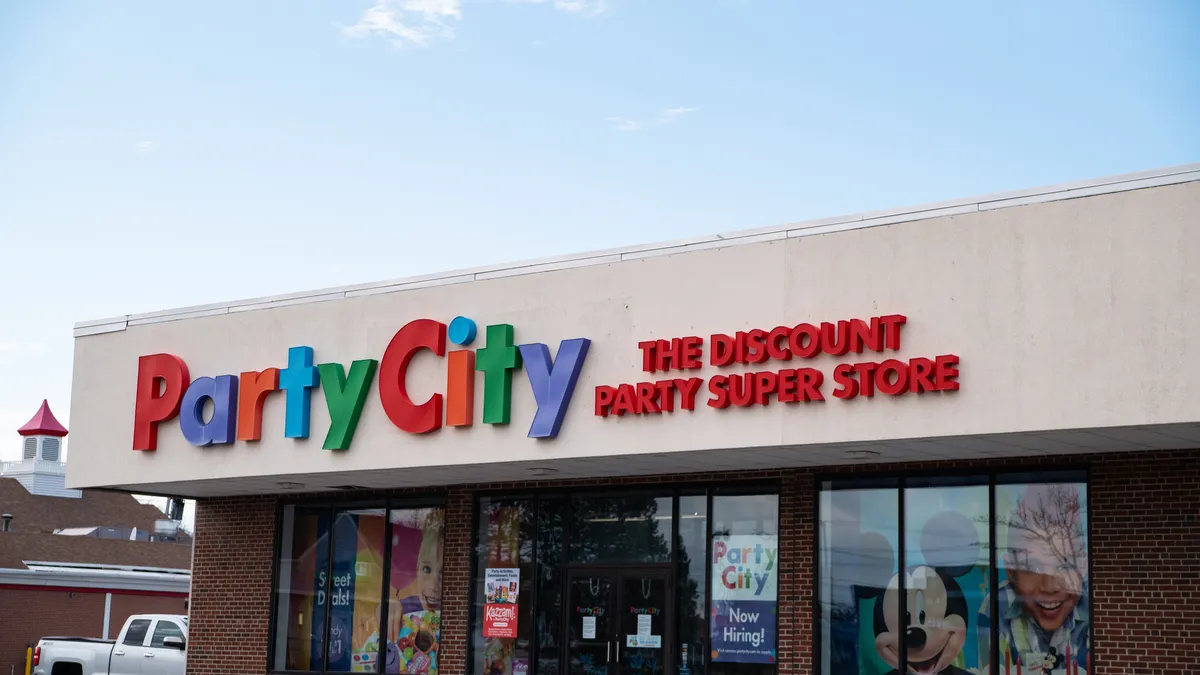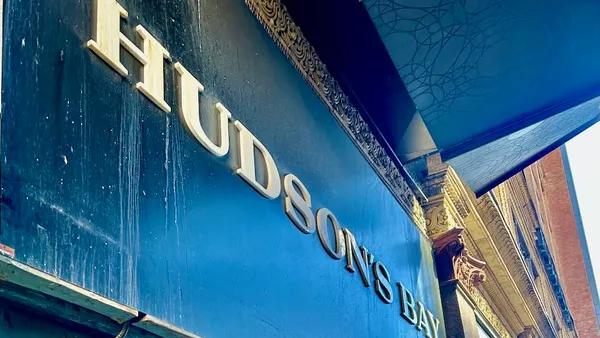Dive Brief:
- Party City revenue during the Halloween period rose 13.9% year over year to $415.5 million, with retail revenue up nearly 20%.
- The party goods retailer opened 90 Halloween City pop-ups for the season. That's nearly four times the 25 stores it opened during last year's season, when Party City scaled back its physical presence for a Halloween defined by the pandemic.
- The Halloween performance nearly closed the gap with October 2019 sales of $432.6 million. For the full third quarter this year, Party City's retail sales were up 8.9% and total net sales were down 4.4% from 2020, mainly because of divestitures in the company's overseas business.
Dive Insight:
Party City has been uniquely challenged by the pandemic, which turned social gatherings into potential superspreader events. At the same time, many have pivoted to decorations and smaller-scale celebrations to brighten life up in stressful times.
Halloween is a good example. Decoration sales have been on the rise since 2020 even as Halloween parties have slowed or stopped in many areas of the country. Party City Chief Financial Officer Todd Vogensen told analysts the company saw increased demand for Halloween decorations even from last year, according to a Seeking Alpha transcript.
Halloween has baggage for Party City beyond the pandemic. It still lags behind 2019's sales, which came in under the retailer's own estimates and represented a likely loss of market share as online shopping gained traction. So along with the changes to the season the pandemic has shaped, Party City has needed to restore its relevance to consumers.
To that end, the company has, according to CEO Brad Weston, been working at "upgrading our product assortments by significantly improving the newness, adding key items, improving quality and increasing innovation" and other efforts, including expanding how-to content online.
Party City has also retooled its strategy around Halloween City stores. The company's pop-up footprint shrank drastically last year, from well over 200 to 25, while the company added staff to stores to fulfill omnichannel sales. This year, the company scaled up Halloween City again, but still limited the footprint well below that of past years.
According to foot traffic analytics firm Placer.ai, on a per-store basis visits to Halloween City were up 3% from 2019 levels in September. That's maybe a testament to earlier shopping for the season that other data has documented. In October, visits remained 8.6% below 2019. At Party City's namesake stores, visits were up for both months on a per-store basis — with an 11% increase in October.
Visits to competitor Spirit Halloween were up 0.7% from 2019 on a per-store basis in September, and down 5.7% in October, according to Placer.ai.
Despite well-publicized supply chain issues throughout the retail industry, Weston said that the company had a solid inventory position during the peak Halloween season. "We started flowing new receipts in June, with most flowing to stores in September and October," Weston said. "And against an industry backdrop, where it was often challenging to find product, we were pleased to be able to deliver for our customers this Halloween season."
Weston added that the company was able to boost margins year over year by reducing carryover inventory and discounts.
At the same time, Vogensen noted that freight and labor costs were on the rise, as with much of the industry. Analysts with Telsey Advisory Group noted Party City's solid Q3 and Halloween performance, and the benefit from a return of social life afforded by COVID-19 vaccines. But the analysts also said, in an emailed research note, that "there is uncertainty around the ability to manage inflation and rising costs, including supply chain pressures."














